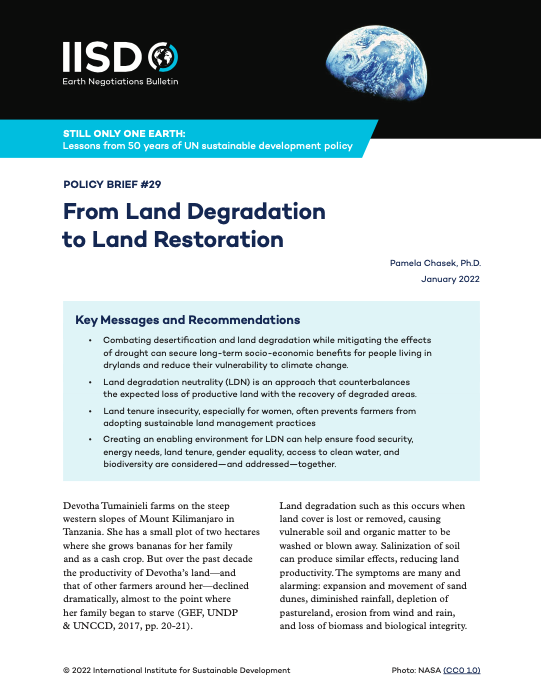From Land Degradation to Land Restoration
Key Messages and Recommendations
• Combating desertification and land degradation while mitigating the effects of drought can secure long-term socio-economic benefits for people living in drylands and reduce their vulnerability to climate change.
• Land degradation neutrality (LDN) is an approach that counterbalances the expected loss of productive land with the recovery of degraded areas.
• Land tenure insecurity, especially for women, often prevents farmers from adopting sustainable land management practices




